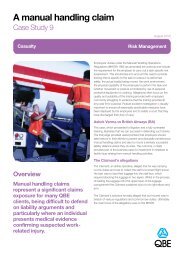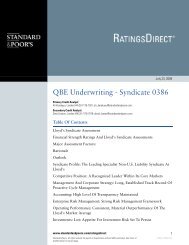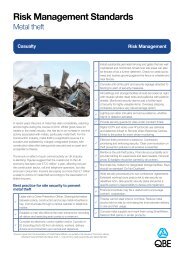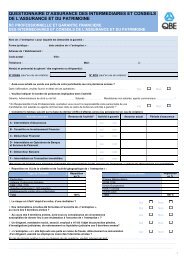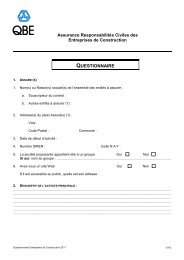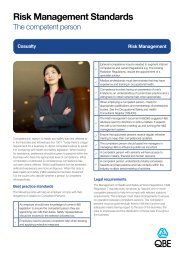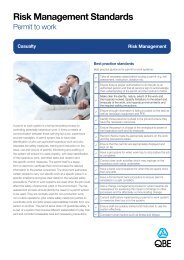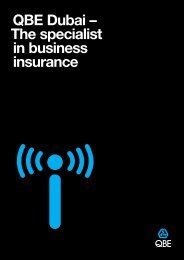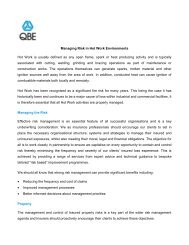QBE European Operations plc
QBE European Operations plc
QBE European Operations plc
Create successful ePaper yourself
Turn your PDF publications into a flip-book with our unique Google optimized e-Paper software.
<strong>QBE</strong> <strong>European</strong> <strong>Operations</strong> <strong>plc</strong> Annual report 2011<br />
71<br />
14 Investments continued<br />
e) Valuation hierarchy continued<br />
The investments included in Level 3 have one or more inputs that are not based on observable market data. These instruments are valued using<br />
cost or stale prices, where alternative inputs are not available. The following table presents the movements of Level 3 investments during the year.<br />
2011 2010<br />
£000 £000<br />
Balance at 1 January 15,528 4,277<br />
Transfer out from Level 3 (124) (4,188)<br />
Unrealised losses in profit and loss statement (302) (73)<br />
Purchases – 15,528<br />
Foreign exchange (432) (16)<br />
Balance at 31 December 14,670 15,528<br />
Notes:<br />
Level 1<br />
Level 2<br />
Level 3<br />
Valued using unadjusted quoted prices in active markets for identical financial instruments. This category includes listed equity shares,<br />
certain exchange-traded derivatives, G10 government securities and certain US agency securities.<br />
Valued using techniques based significantly on observable market data. Instruments in this category are valued using:<br />
a) quoted prices for similar instruments or identical instruments in markets which are not considered to be active; or<br />
b) valuation techniques where all the inputs that have a significant effect on the valuation are directly or indirectly based on observable<br />
market data.<br />
Valued using techniques where at least one input (which could have a significant effect on the instrument’s valuation) is not based on<br />
observable market data.<br />
15 Financial risk<br />
The activities of the Group expose it to financial risks such as market risk, credit risk and liquidity risk. The Group’s risk management framework<br />
recognises the unpredictability of financial markets and seeks to minimise potential adverse effects on its financial performance.<br />
The key objectives of the Group’s asset and liability management strategy are to ensure sufficient liquidity is maintained at all times to meet the Group’s<br />
obligations, including its settlement of insurance liabilities and, within these parameters, to optimise investment returns for the Group.<br />
i) Market risk<br />
Market risk is the risk that the fair value or future cash flows of a financial instrument will fluctuate because of changes in market factors. Market risk<br />
comprises three types of risk: currency risk (due to fluctuations in foreign exchange rates), interest rate risk (due to fluctuations in market interest rates)<br />
and price risk (due to fluctuations in market prices).<br />
Currency risk<br />
The Group is exposed to foreign currency risk in respect of its foreign currency exposures and forward foreign exchange derivatives are used to protect<br />
the currency positions.<br />
The risk management process covering forward foreign exchange derivatives involves close senior management scrutiny, including regular board and<br />
other management reporting. All forward foreign exchange derivatives are subject to delegated authority levels provided to management and levels of<br />
exposure are reviewed on an ongoing basis.<br />
Financial statements



